
What is the best way to organize, understand, and share a complex idea? To me, I will say Mind Maps.
Mind maps are common. We use them for our lives, studies, and work. They're helpful and easy to make. In this article, we will discuss some basics about mind maps, including their definition, purposes, elements, and steps to make one.
In this article
Part 1: What is a Mind Map
A mind map is a kind of diagram. It's a visual method to organize concepts, ideas, information, and problems. It simplifies the relationships of concepts with nodes, arrows, lines, and branches.
Without mind maps, we need to explain how a major idea and others relate with effects. But once we export words into a hierarchical mind map, we can easily understand the connection of each concept.
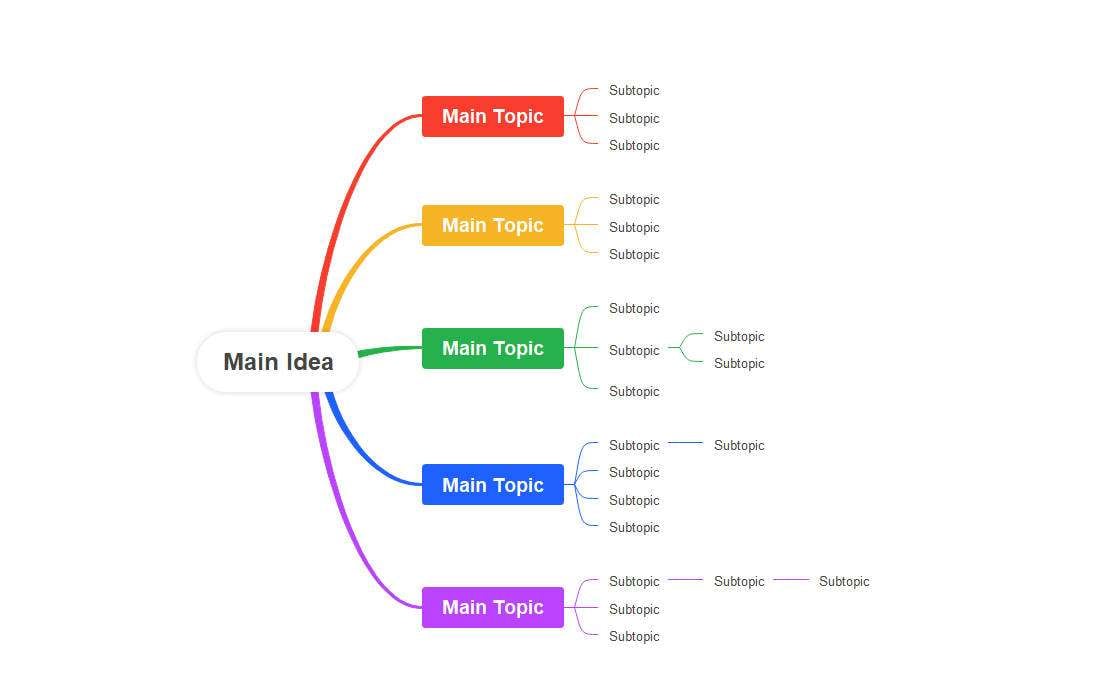
A mind map starts with a major idea. All the connected other ideas radiate from the major one. Compared to a mind map, a concept map is not hierarchical. When the branches and nodes serve for the central theme in a mind map, a concept map shows how different concepts are ideas are connected, with no levels.
Origin of mind maps:
Back in the 1970s, Tony Buzan first mentioned the term: mind map. He promoted his ideas of mind maps: a major theme followed by subtopics in a colorful, radiant, tree-like framework.
Our ancestors used similar ways to make concepts easy to understand. But this was the first time a person had summarized and formally stated the concept of mind mapping. Since then, we will use "mind maps" in our lives.
Part 2: Main Purposes of the Mind Map
As mentioned, a mind map makes concepts easy to understand. It fits every industry and situation as long as dealing with a complex task. We can use it for:
- Note-taking: Mind maps provide a quick way to organize concepts in a meeting or lesson. Put all the mentioned concepts in order, and we can then quickly understand and recall the details.
- Brainstorming: Write down all the old ones connected to the major theme. This helps you better clear your mind. Then, when you come up with a new one, add it to the mind map and compare it with the old ones.
- Project Planning: With the help of mind maps, project managers can easily break down complex tasks into manageable components.
- Problem Solving: Mind maps, like Fishbone diagrams, help analyze complex problems. With such mind maps, teams can find the effect and work their way towards finding the causes.
- Learning: Mind maps help stimulate the prefrontal cortex (PFC) of the brain, which helps students retain information for a longer time.
We can use mind maps for more situations, like work, education, and more.
Part 3: Key Elements in Mind Map
A well-structured mind map comprises several key elements that help to convey information in the best way possible. Some of the key elements of a mind map are:
- Central Idea: The central idea or topic is the core concept around which the entire mind map revolves. It serves as the focal point and is typically placed in the center of the diagram.
- Main Branches: These primary categories connect the subtopics directly to the central idea.
- Subtopics: Subtopics or subcategories stem from the main branch and represent specific aspects. They are the second level of this mind map.
- Keywords/Labels: Keywords are phrases that provide a brief description of the content within a particular element.
- Lines/Arrows: These visual elements connect the central idea, main branches, subtopics, and keywords.
- Formatting: Different colors, fonts, and formatting choices generally help others to differentiate elements within the mind map.
Part 4: Benefits and Limitations of a Mind Map
Mind maps are more than what an eye can see. They help the students and professionals to map out the problem in such a way that they find the solution at the earliest.
Some of the benefits of using mind maps are:
- Enhanced Creativity and Brainstorming: Mind maps encourage free thinking and creativity. Since mind maps provide a non-linear structure, they allow the onlookers to generate ideas spontaneously.
- Improved Memory and Retain: As per numerous studies, creating a mind map engages both the left and right hemispheres of the brain. This dual activation helps in memory retention.
- Effective Problem Solving: With the help of mind maps, one can easily break down complex problems into manageable components.
- Efficient Note-Taking: Mind maps tend to condense the information into a structured format that simplifies the review process.
- Clearer Communication: When we have detailed brainstorming sessions and create mind maps, we provide a way to convey our ideas and concepts to others in such a way that the topic becomes more engaging and is easier to understand than normal text.
Part 5: How to Make a Mind Map
Making a mind map is easier than one might have imagined. With a mind map tool like EdrawMind Mind Map Maker, creating a mind map takes no more than five minutes. Follow the steps to create a mind map with EdrawMind.
Step1Choose Template
The first step that you need to do after launching EdrawMind in your system is to head to the MindMap Gallery from the homepage. This will take you to the template community, where there are thousands of public mind map templates that you can instantly duplicate.
Check one of those templates or search for a particular domain to check the user-generated mind map template. Once selected, click on Duplicate to import the template to your EdrawMind canvas for further customization.
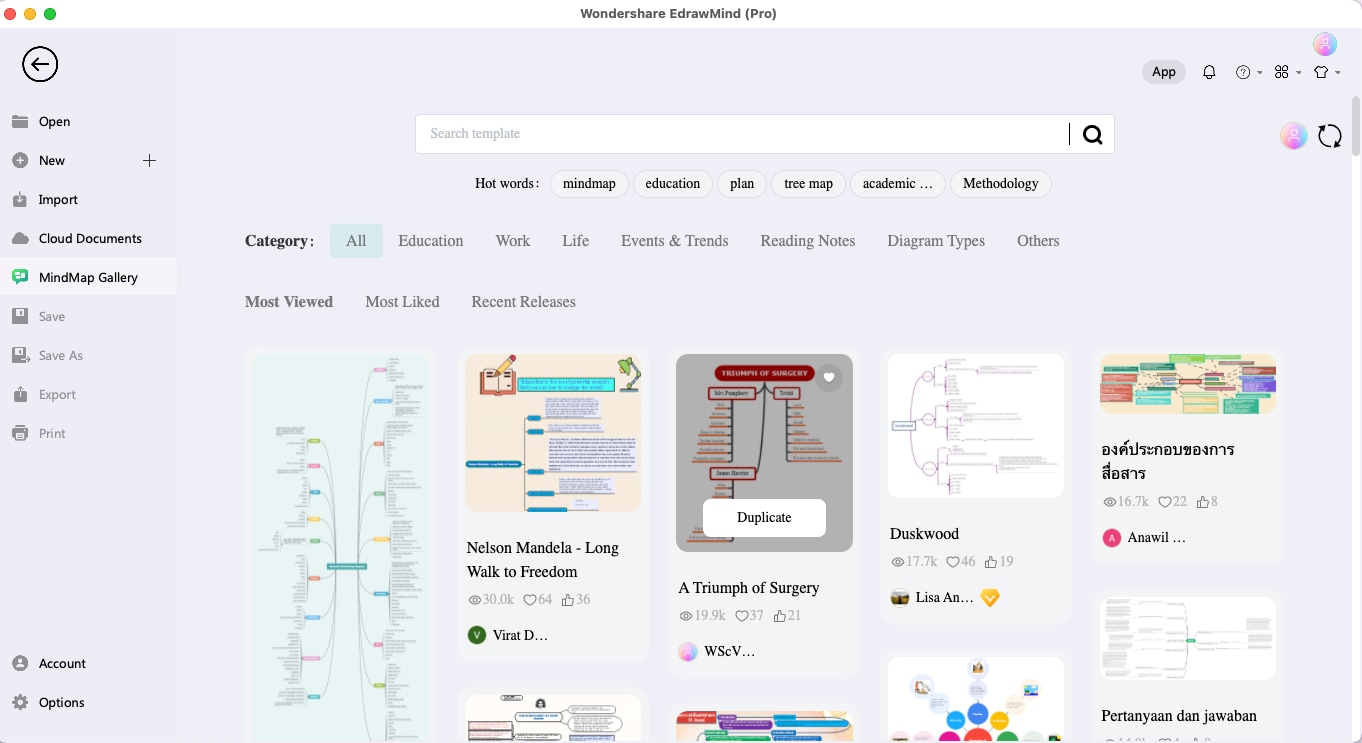
Step2Blank Drawing
If you want to create a mind map from scratch, click on New > select from different mind map types that come close to your requirement. The system will instantly take you to the canvas page, where you will have the initial mind map ready.
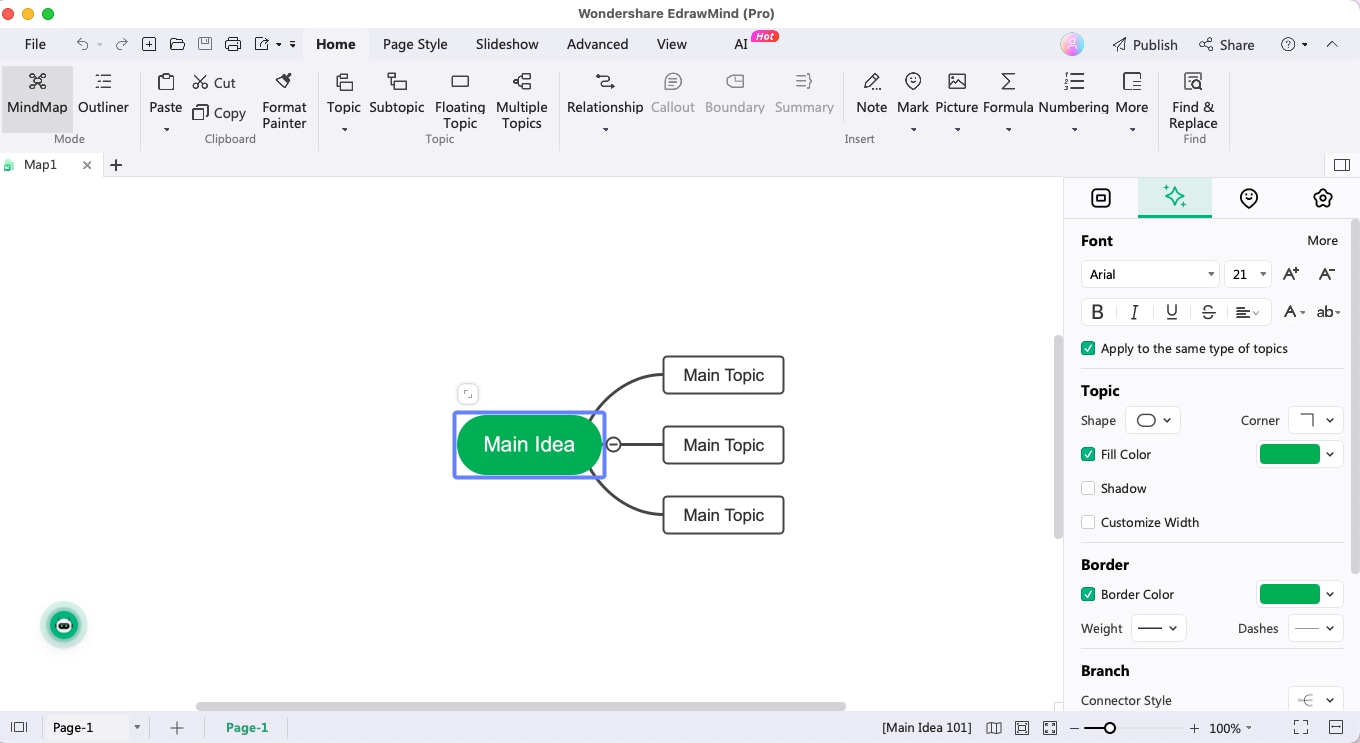
Step3Add Topics
Rename the Main Topic with the central theme or topic. Now, start adding different topics to them. You can easily press the Tab key on your keyboard to add a topic or subtopic.
Add the content and label them till you have covered all the areas. You can even use the Summary or Boundary option to summarize a part of the mind map.
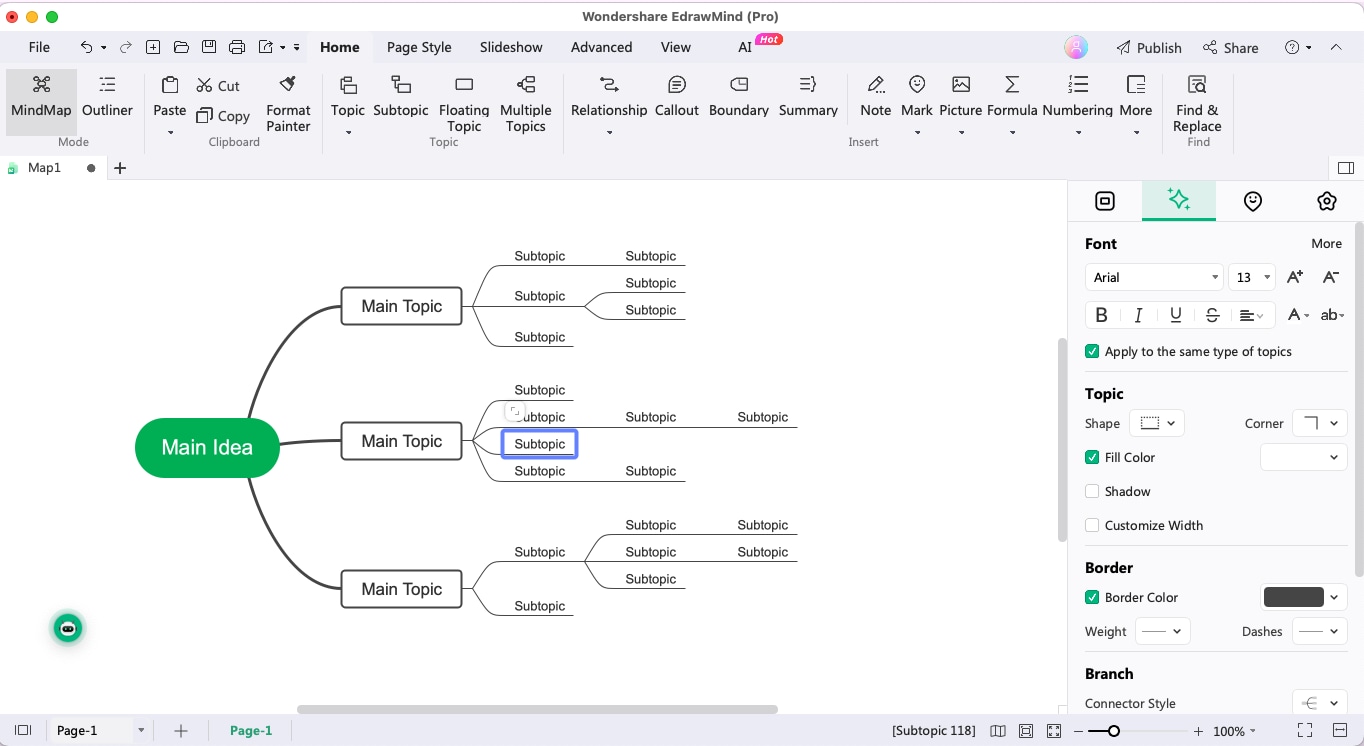
Step4Relationship & Customize
Click on the Summary option to add a floating topic right next to any topic that you want. With the built-in customization options, you can easily customize the mind map. From the right panel, you can even change the theme of the mind map and also add different styles to the content.
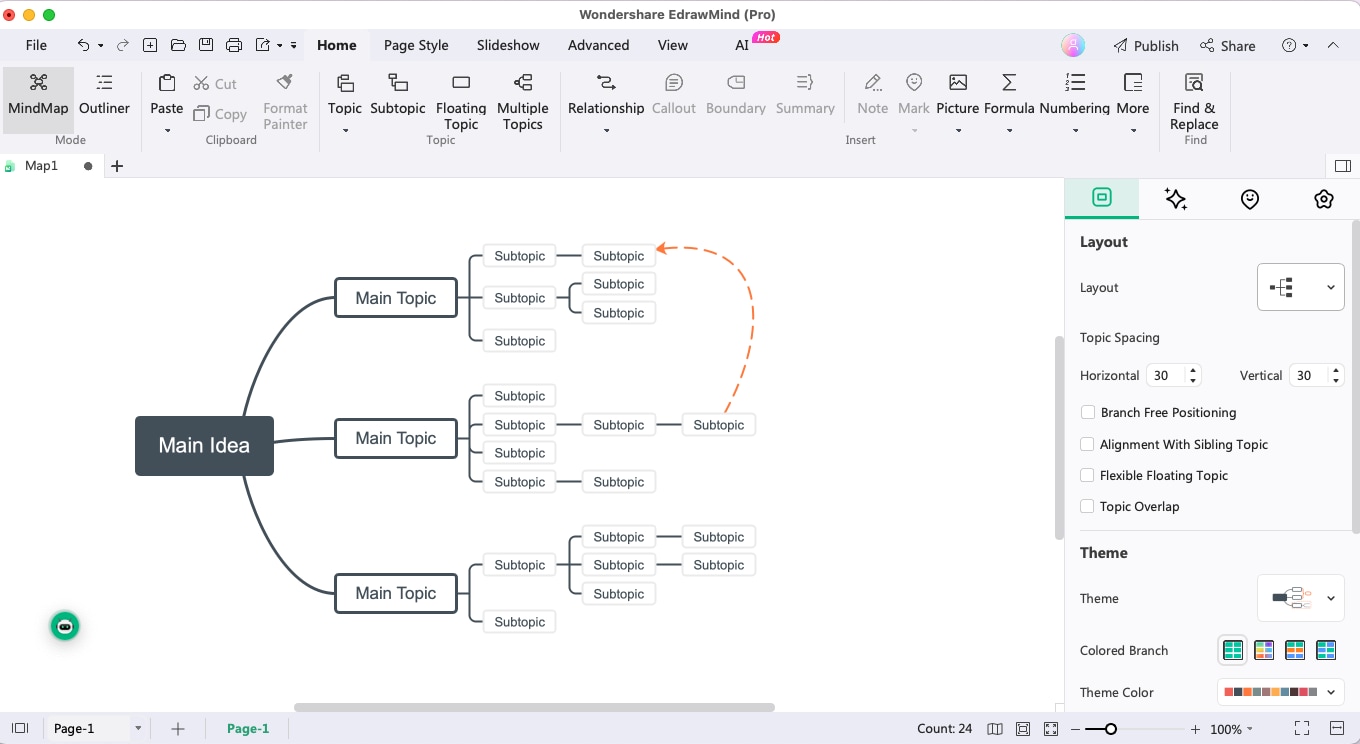
Part 6: Free Mind Map Examples
We can skip the manual process for making a mind map. There are quick mind map templates available. Download one and change the text. A mind map for your situation is done!
1. Classical Music Forms Mind Map
In the following mind map example, the core topic of discussion is 'Classical Music Forms'. We have added different topics that resonate with the central theme from brainstorming, like Opera, Chamber Music, Suite Music, Concerts, and others.
In order to elaborate this mind map further, we have added different subtopics to each of these topics that exemplify the overall theme. Similar kinds of mind map examples are readily available in the EdrawMind mind map gallery, from which users can download such templates to customize as per their needs.
2. Travel Plan Mind Map
If you have ever thought of traveling, you have to agree that creating a travel plan is very important, and without proper mind mapping, this task can become daunting. In the following mind map example, we have a travel mind as the core idea and have added different topics to it, like accommodation, Activities, Means of Transportation, and Things to Consider Before Departure.
Based on your travel destination and itineraries, you can add relevant details to these topics and can even find relevant connections between them. Download such amazing mind map templates from EdrawMind.







